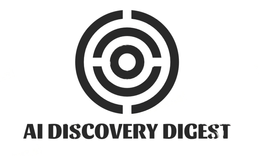Welcome to the era where artificial intelligence (AI) is revolutionizing how we communicate and respond to hazards and threats in real-time. Imagine a world where advanced technology can predict, analyze, and disseminate vital information instantaneously during times of crisis. In this blog post, we delve into the pivotal role that AI plays in enhancing hazard and threat communication, ensuring quicker response times and potentially saving lives. Let’s explore how AI is reshaping the landscape of crisis management like never before!
The Need for Real-Time Hazard and Threat Communication
In today’s fast-paced world, the need for real-time hazard and threat communication has never been more crucial. With natural disasters, terrorist attacks, and other emergencies on the rise, timely information can mean the difference between life and death.
Traditional methods of communication are often slow and inefficient when it comes to disseminating urgent alerts to a large population. This is where AI steps in to revolutionize crisis management by providing instantaneous notifications and updates.
Imagine a system that can analyze data from various sources in real-time to identify potential threats and automatically alert authorities and civilians within seconds. This capability not only saves precious time but also ensures a swift response to mitigate risks.
AI-powered solutions enable predictive modeling, early warning systems, personalized alerts based on location or preferences, all contributing to enhanced emergency preparedness at both individual and community levels.
Advantages of AI in Hazard and Threat Communication
AI technology offers numerous advantages in hazard and threat communication. One key benefit is its ability to process vast amounts of data in real-time, allowing for quick identification and analysis of potential risks. By utilizing AI algorithms, emergency response teams can receive instant alerts and recommendations based on predictive analytics, enabling faster decision-making during critical situations.
AI-powered systems can automatically prioritize incoming information and filter out irrelevant data, reducing the risk of information overload and ensuring that only pertinent details are shared with relevant stakeholders. This streamlined approach enhances communication efficiency and accuracy in times of crisis.
AI can facilitate seamless integration between various communication channels, such as social media platforms or mobile apps, to disseminate timely warnings and instructions to the public effectively. This multi-channel approach helps reach a broader audience quickly and ensures that vital information reaches those who need it most.
Examples of Successful Implementation of AI in Crisis Management
In recent years, AI has revolutionized crisis management by enhancing real-time hazard and threat communication. One notable example of successful implementation is the use of AI-powered chatbots during natural disasters. These intelligent bots can provide crucial information to affected individuals swiftly and efficiently.
Predictive analytics algorithms have been instrumental in identifying potential hazards before they escalate into crises. By analyzing vast amounts of data, AI can forecast trends and patterns that enable early intervention and mitigation strategies.
Drones equipped with AI technology are being utilized for rapid assessment and response in disaster-stricken areas. These unmanned aerial vehicles can survey affected regions, assess damages, and locate survivors in a fraction of the time it would take traditional methods.
Social media monitoring tools powered by AI play a vital role in crisis communication by tracking online conversations and sentiment analysis during emergencies. This enables authorities to gauge public perception accurately and tailor their responses accordingly.
These examples highlight the significant impact that AI has had on improving crisis management practices worldwide.
Challenges and Limitations of AI in this Field
As with any technology, AI in the field of real-time hazard and threat communication comes with its fair share of challenges and limitations. One significant challenge is ensuring the accuracy and reliability of the data input into AI systems. Inaccurate or incomplete data can lead to flawed decision-making processes, potentially putting lives at risk.
Another limitation lies in the potential for biases within AI algorithms. If not carefully monitored and regulated, these biases could result in discriminatory outcomes when it comes to assessing threats or communicating hazards to different populations.
There is also a concern regarding the ethical implications of relying too heavily on AI for critical communications during crises. The human touch and empathy that are essential in such situations may be lacking when solely depending on artificial intelligence systems.
Technical glitches or malfunctions within AI systems pose a risk to effective hazard communication strategies. It’s crucial to have backup plans in place to address potential failures and ensure seamless operations during emergencies.
Conclusion
In the fast-paced world we live in, real-time hazard and threat communication is more critical than ever. With the help of AI technologies, organizations can now effectively identify, assess, and respond to emergencies promptly.
By leveraging AI capabilities such as data analysis, pattern recognition, and automation, real-time hazard communication systems can provide accurate and timely information to keep people safe. From natural disasters to cybersecurity threats, AI plays a vital role in enhancing crisis management strategies.
While there are challenges and limitations associated with implementing AI in this field, continuous advancements in technology offer promising solutions for improving real-time hazard and threat communication. As we move forward into an increasingly unpredictable future, embracing AI for crisis management will undoubtedly become essential for ensuring safety and security across various sectors.


